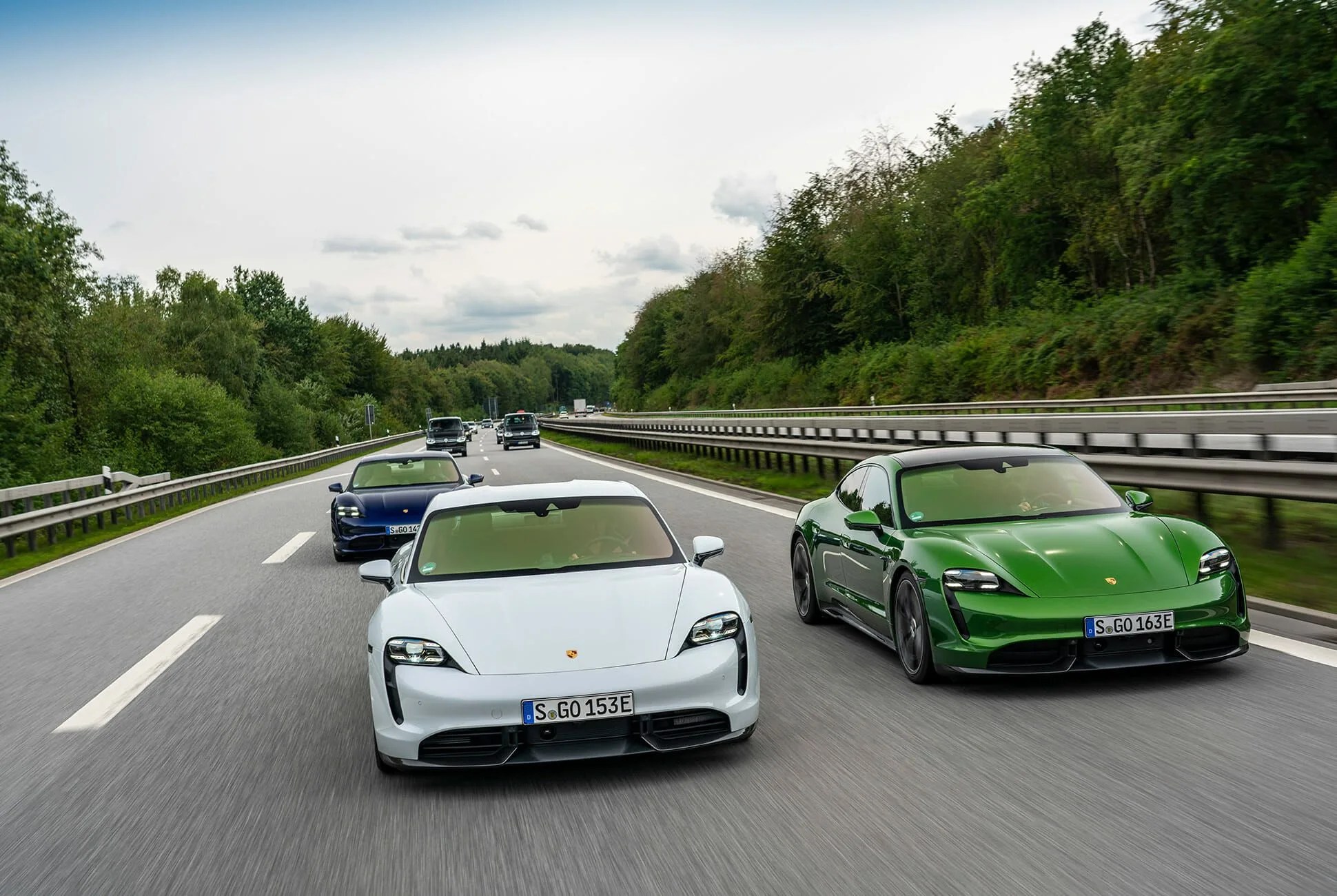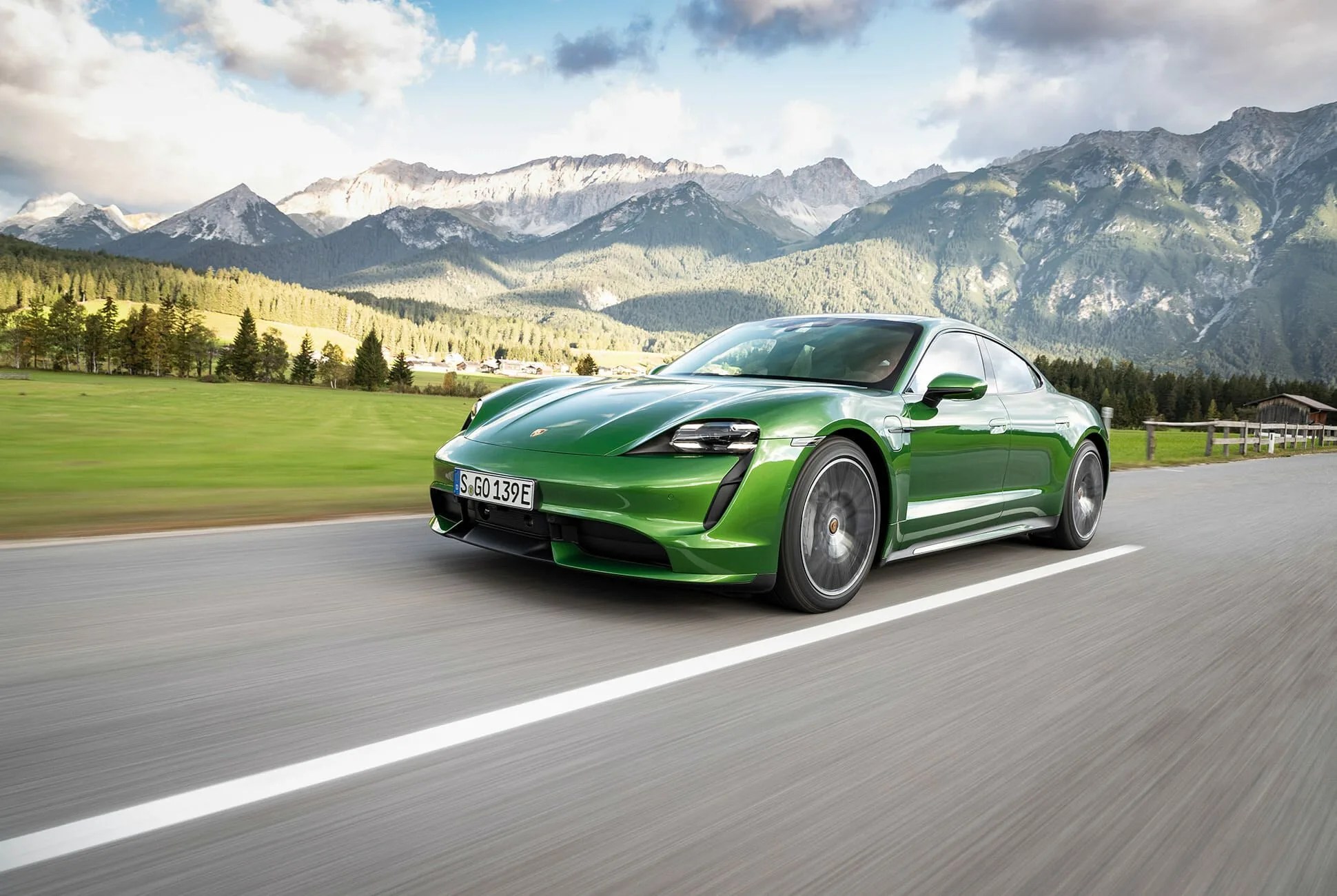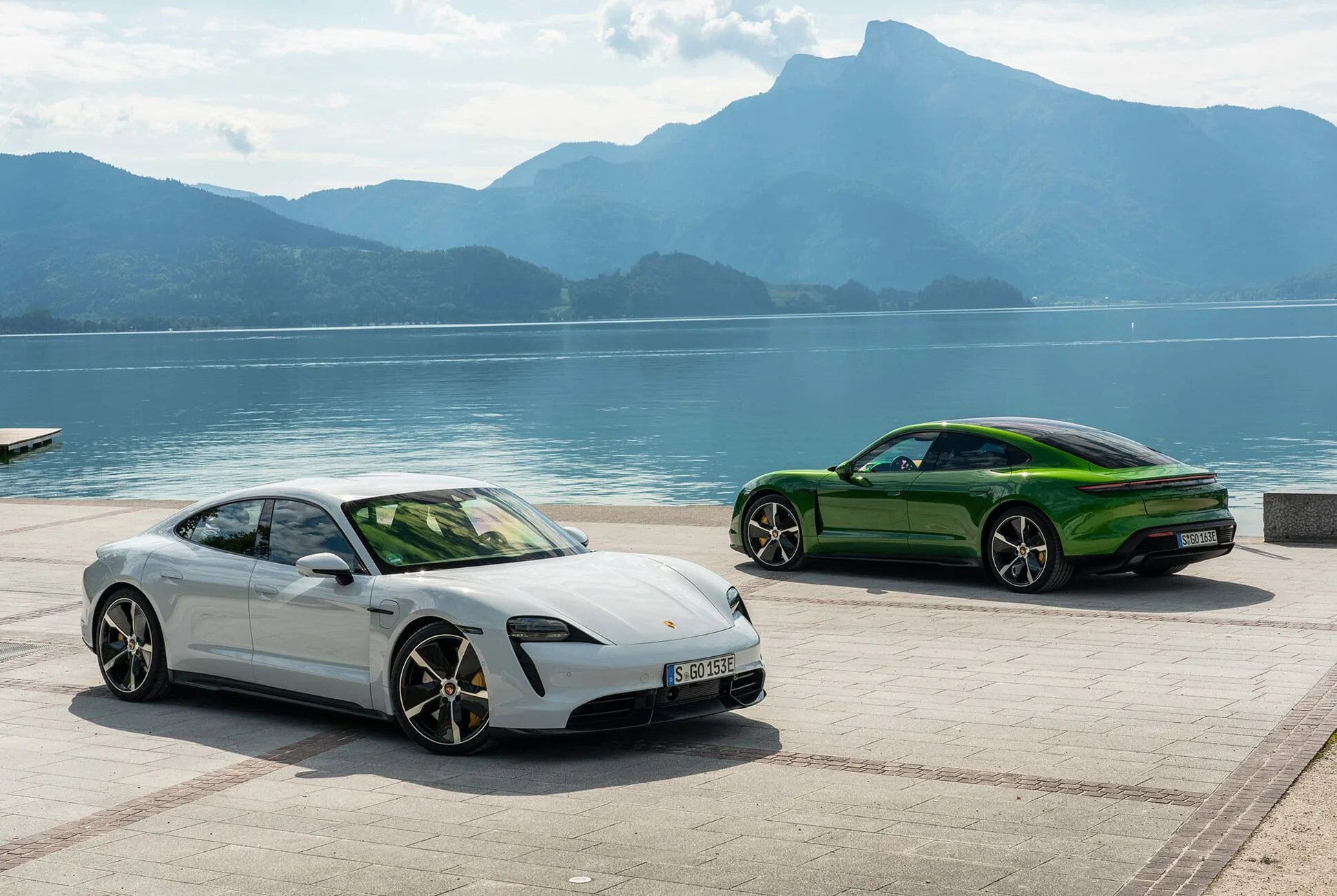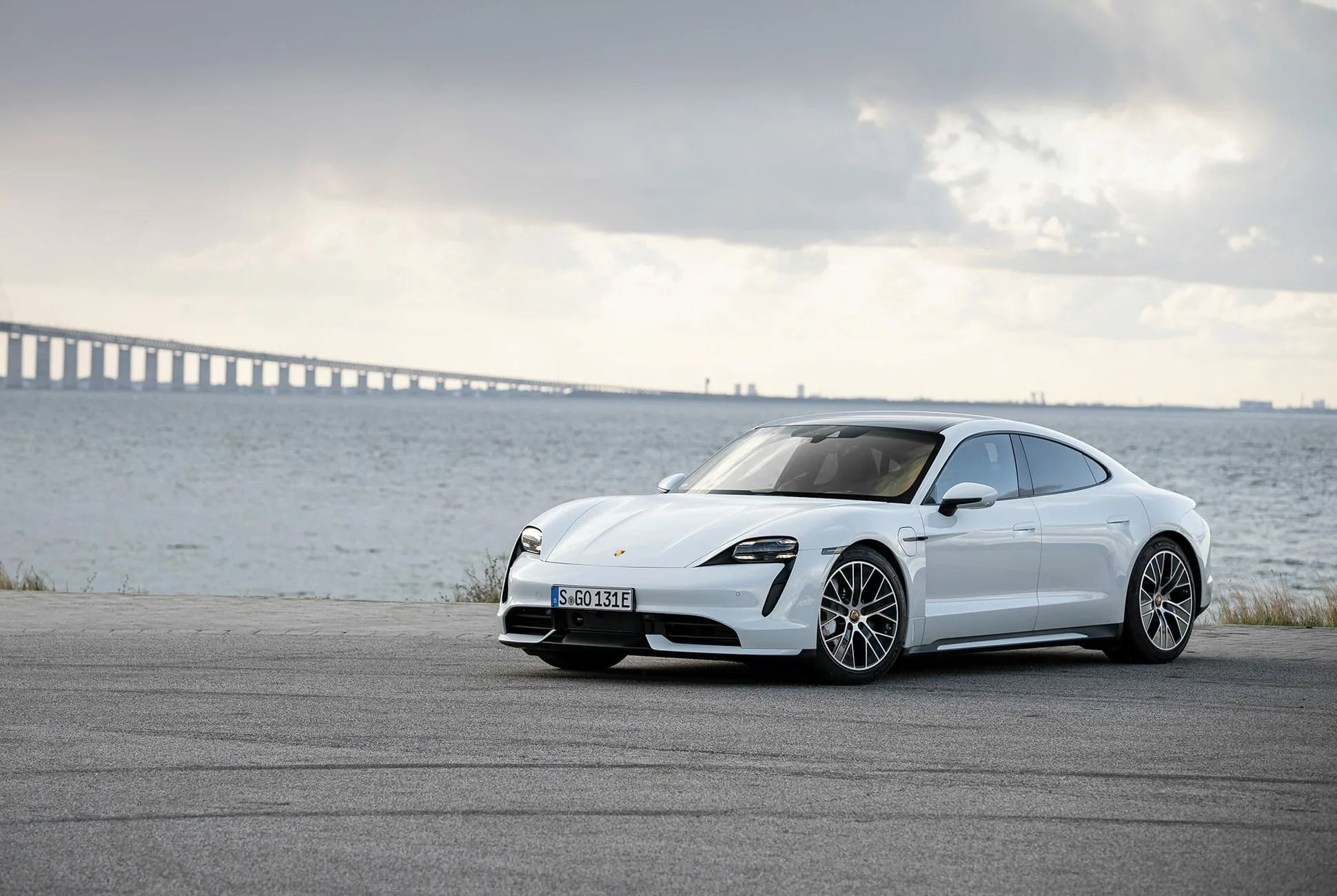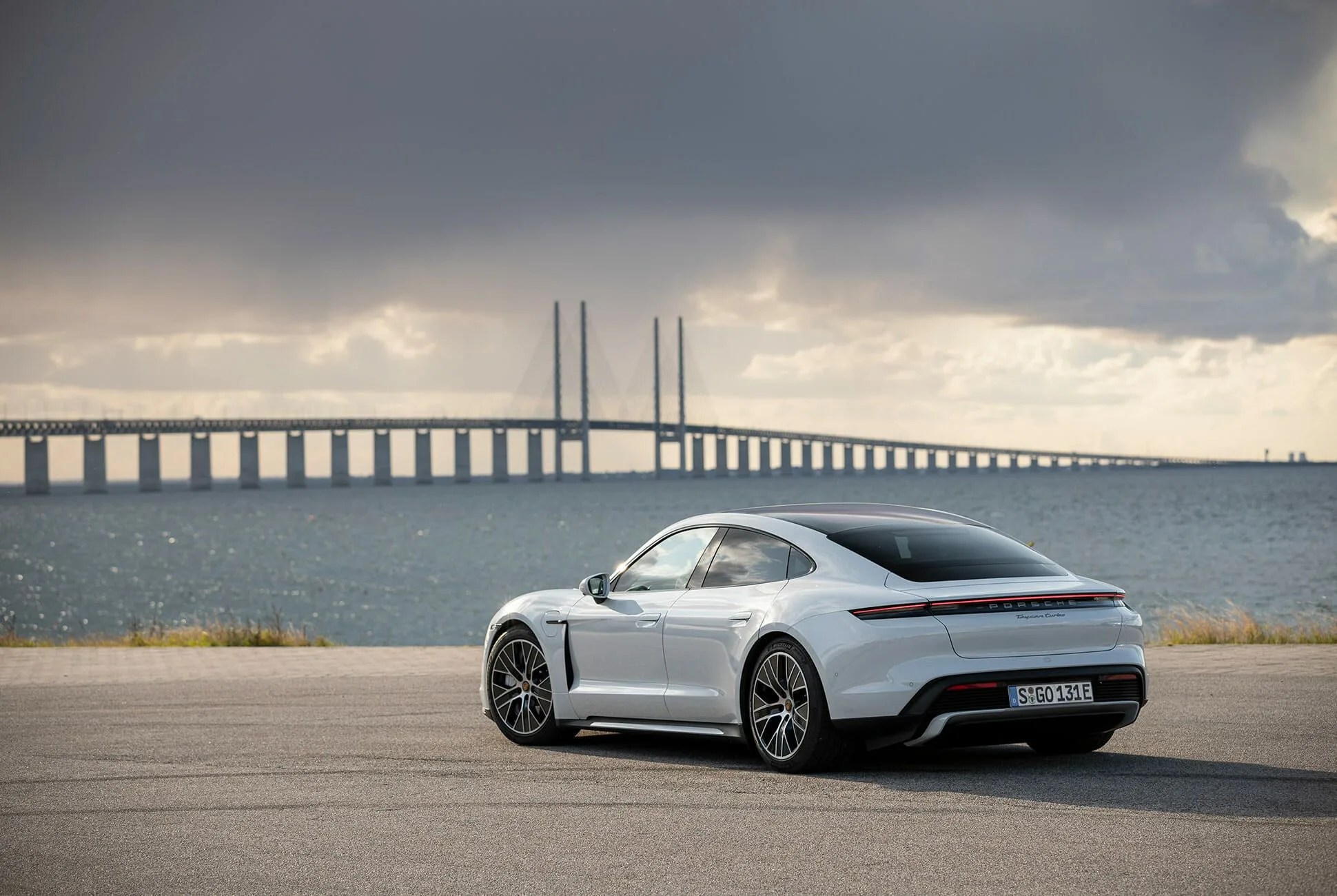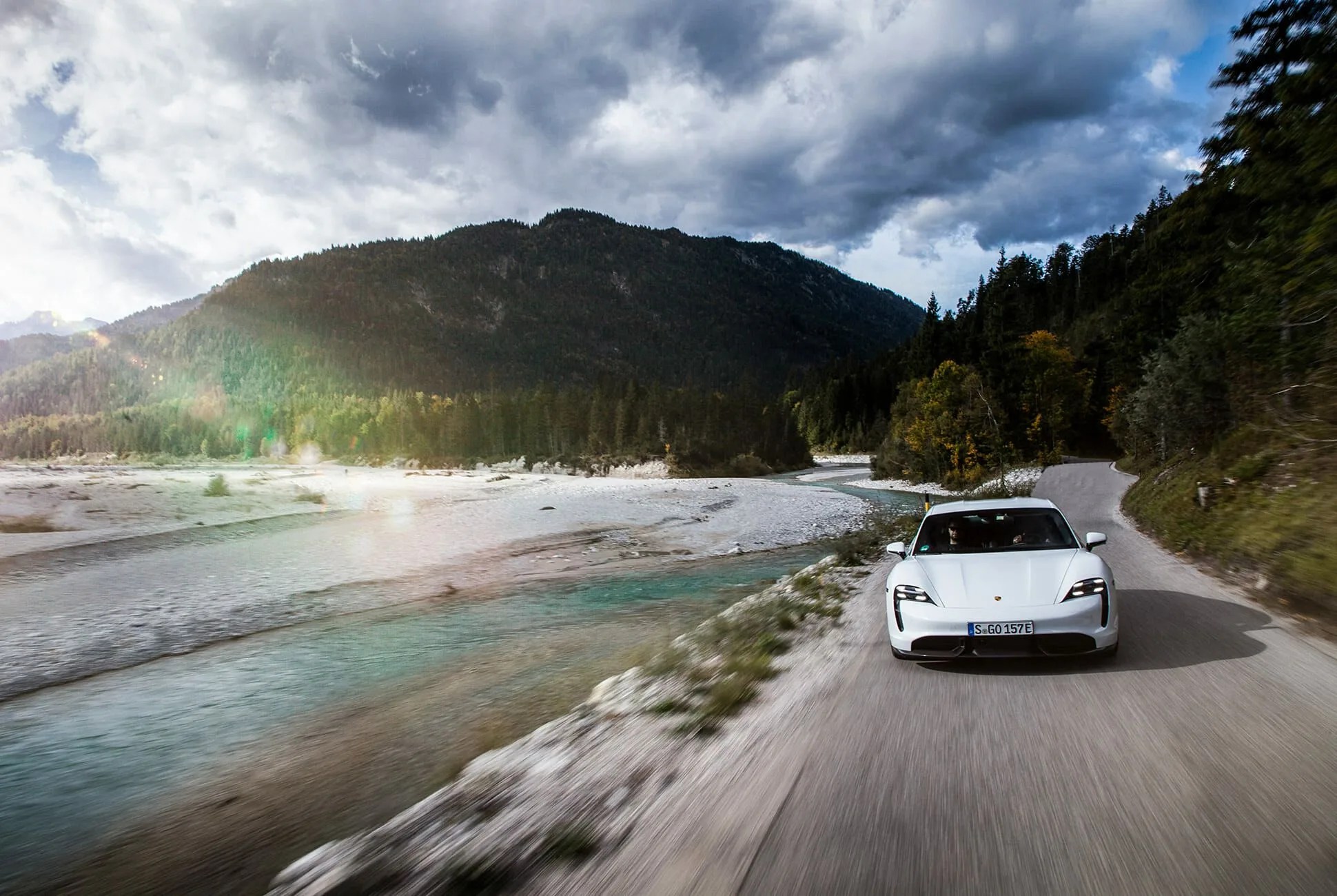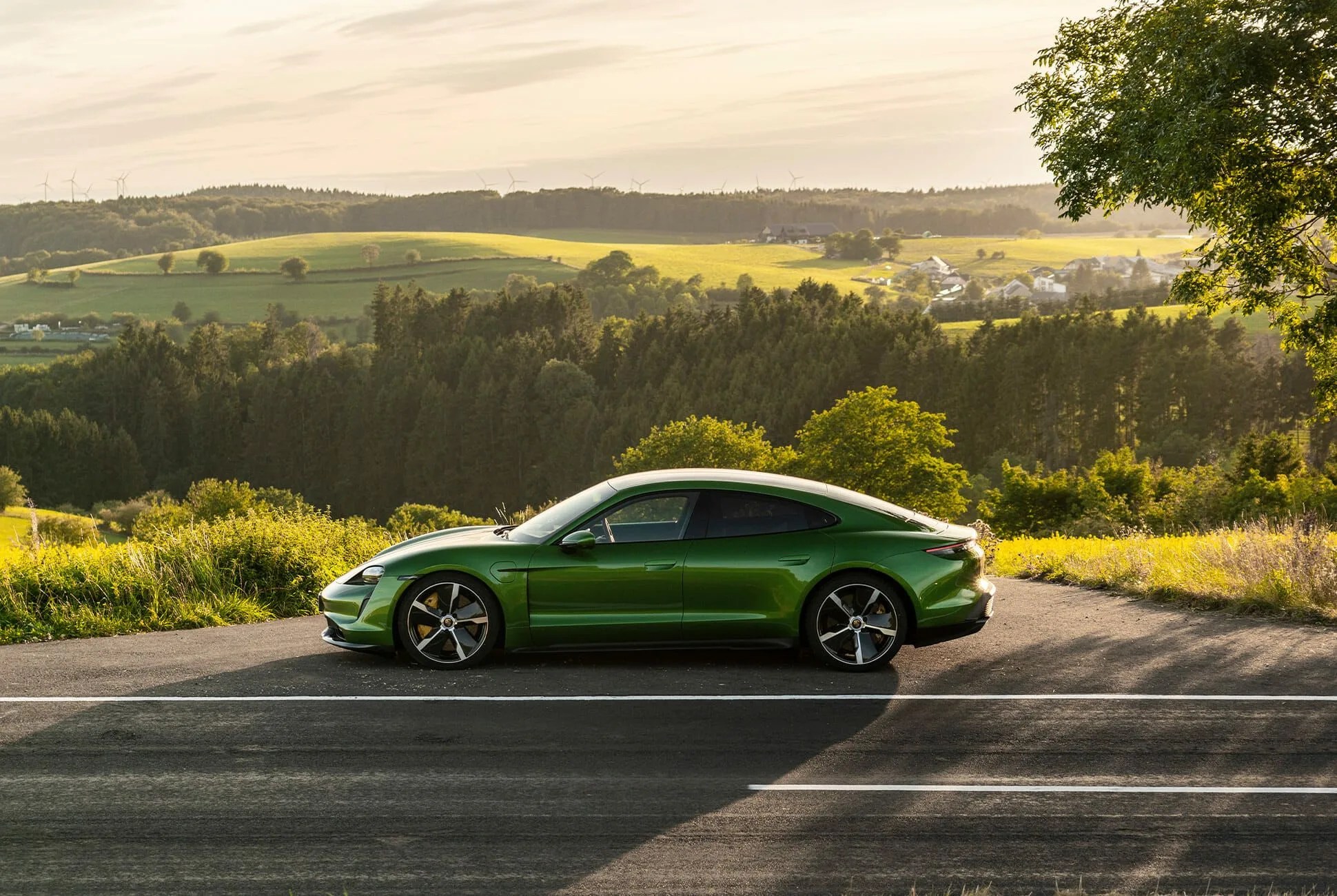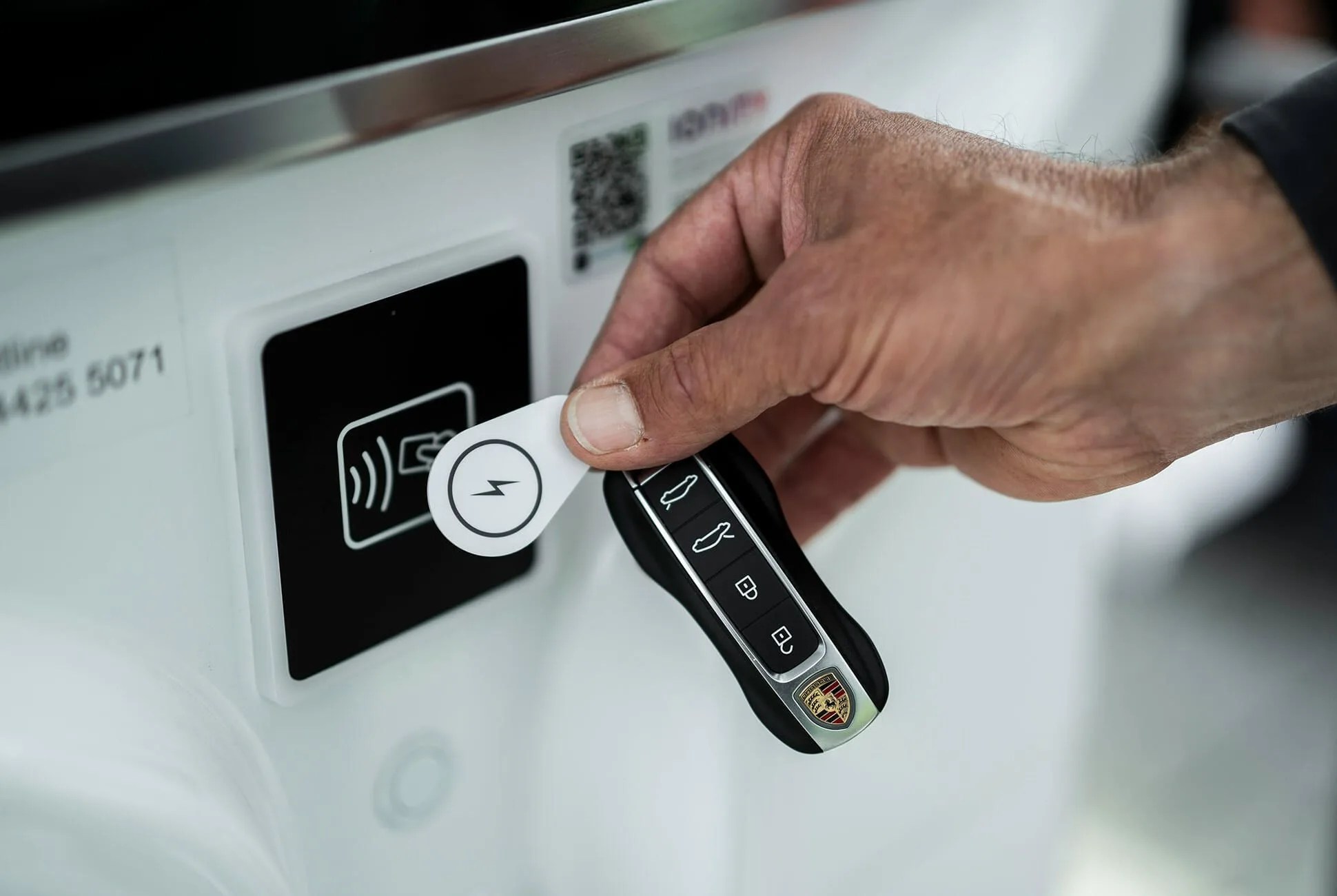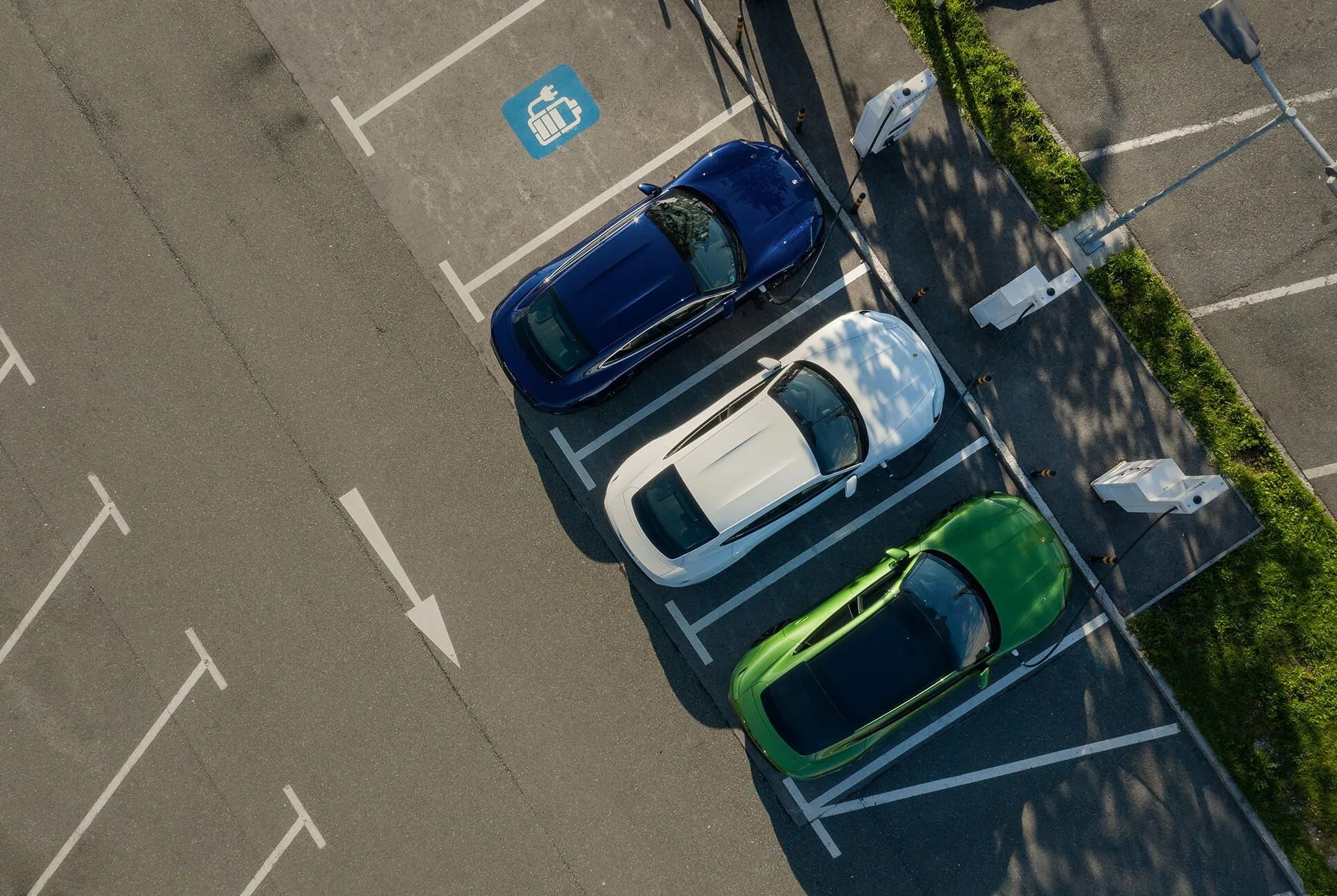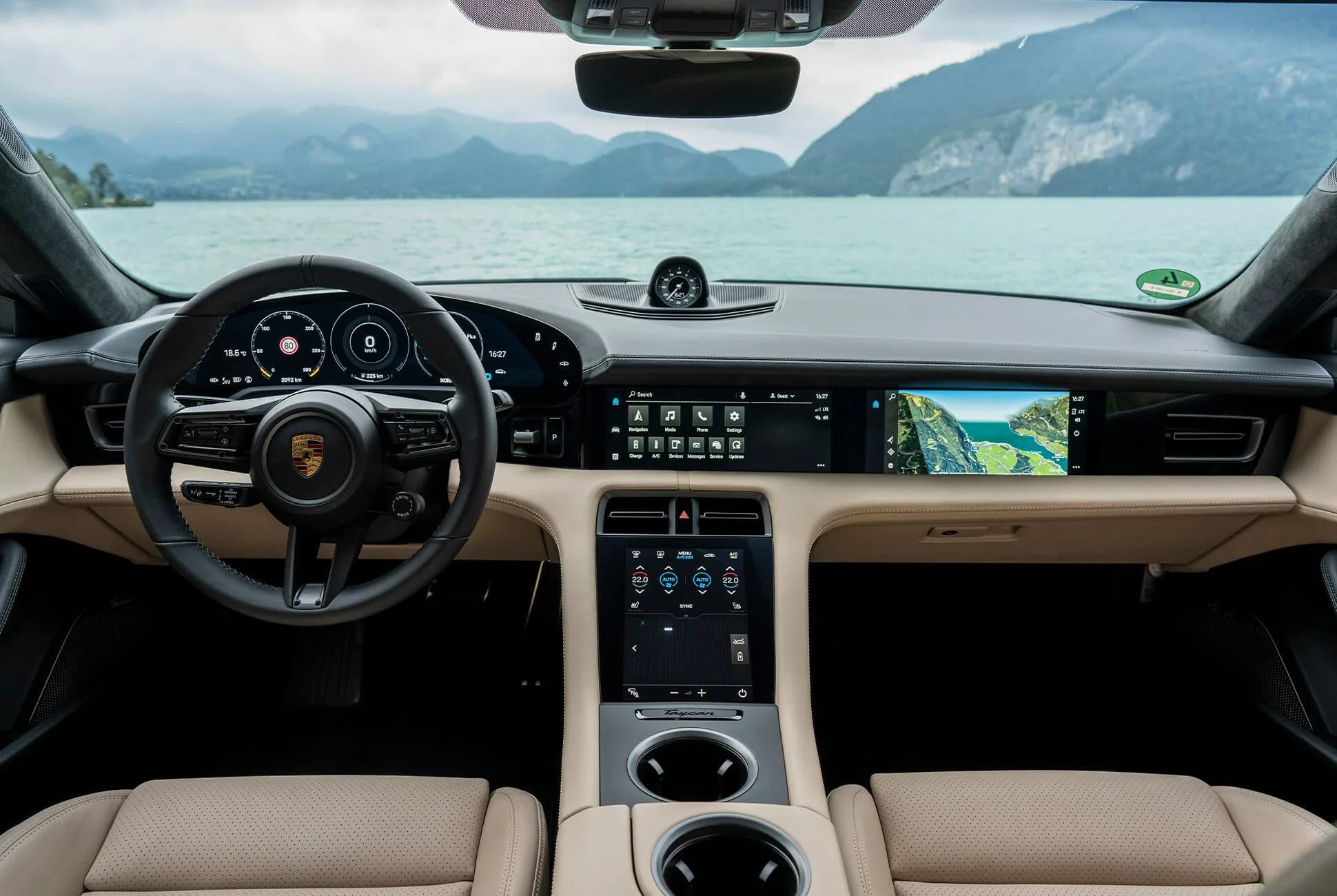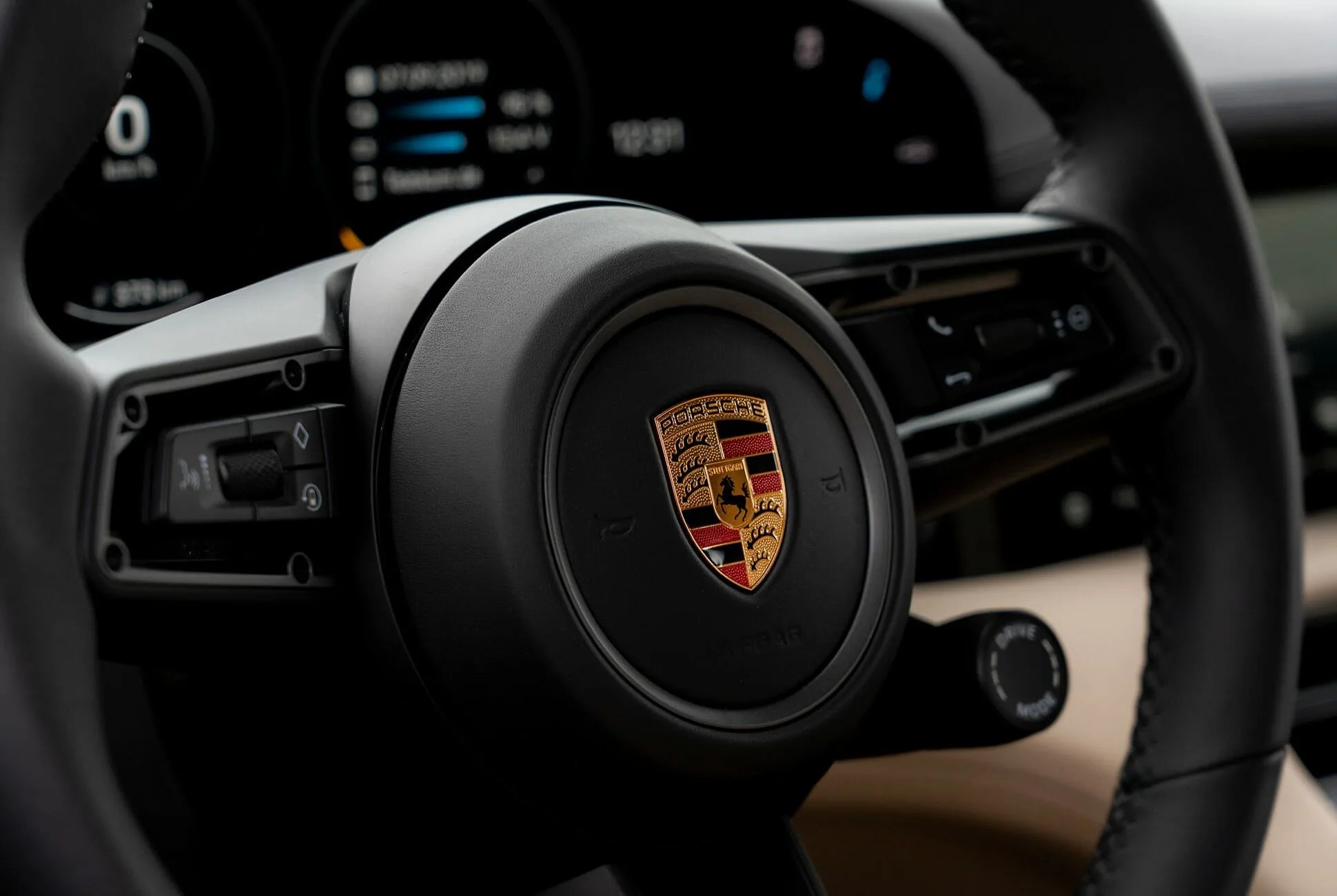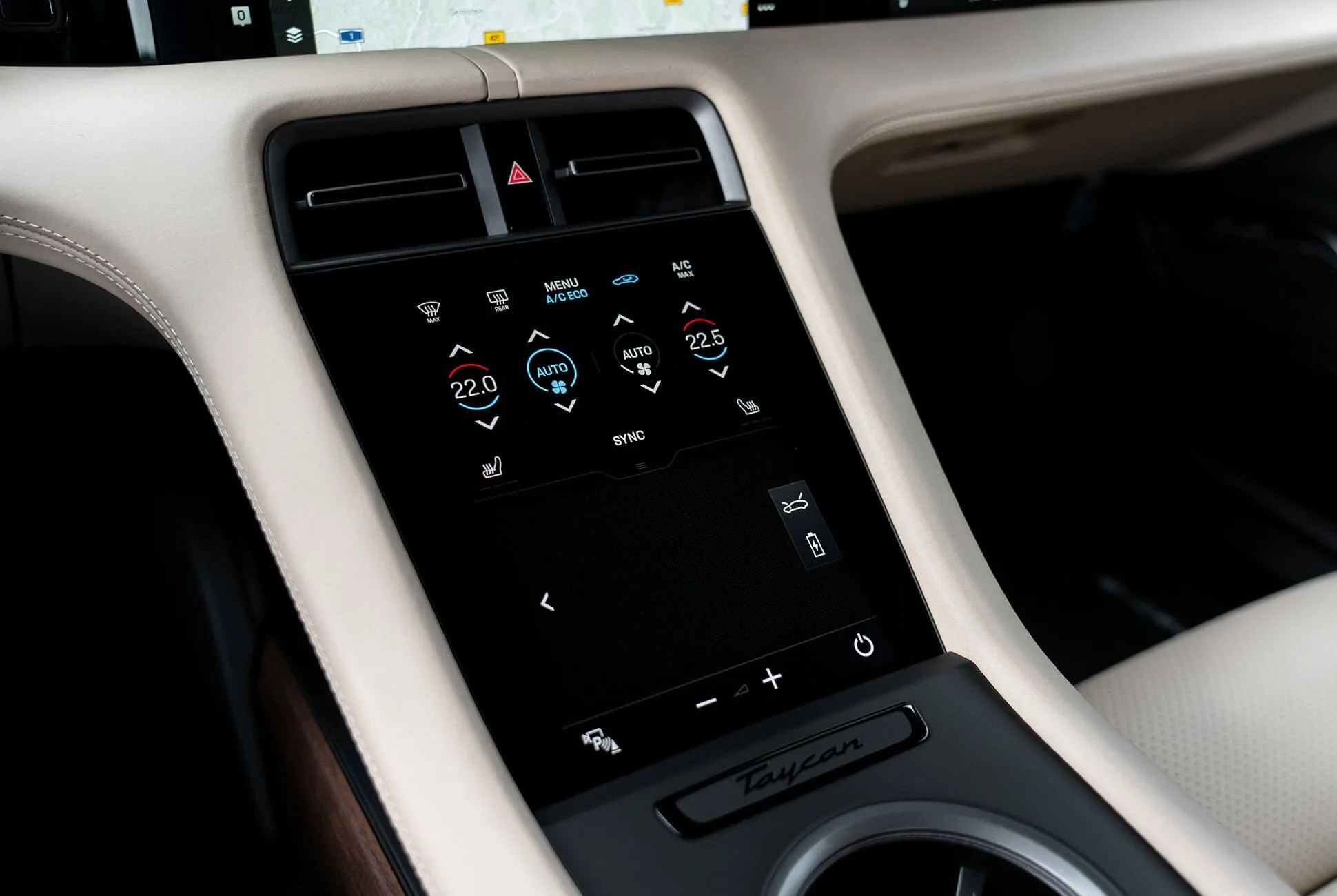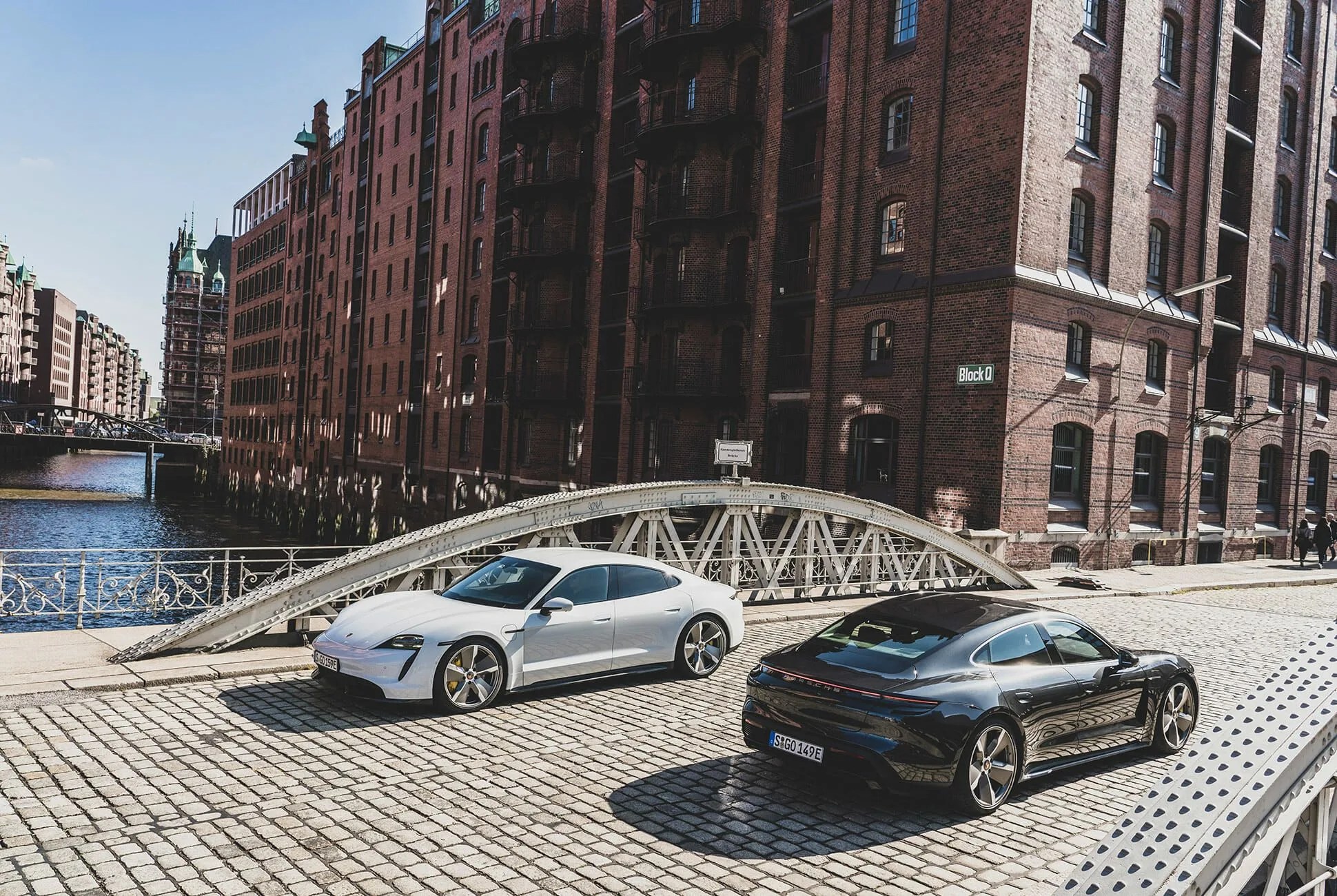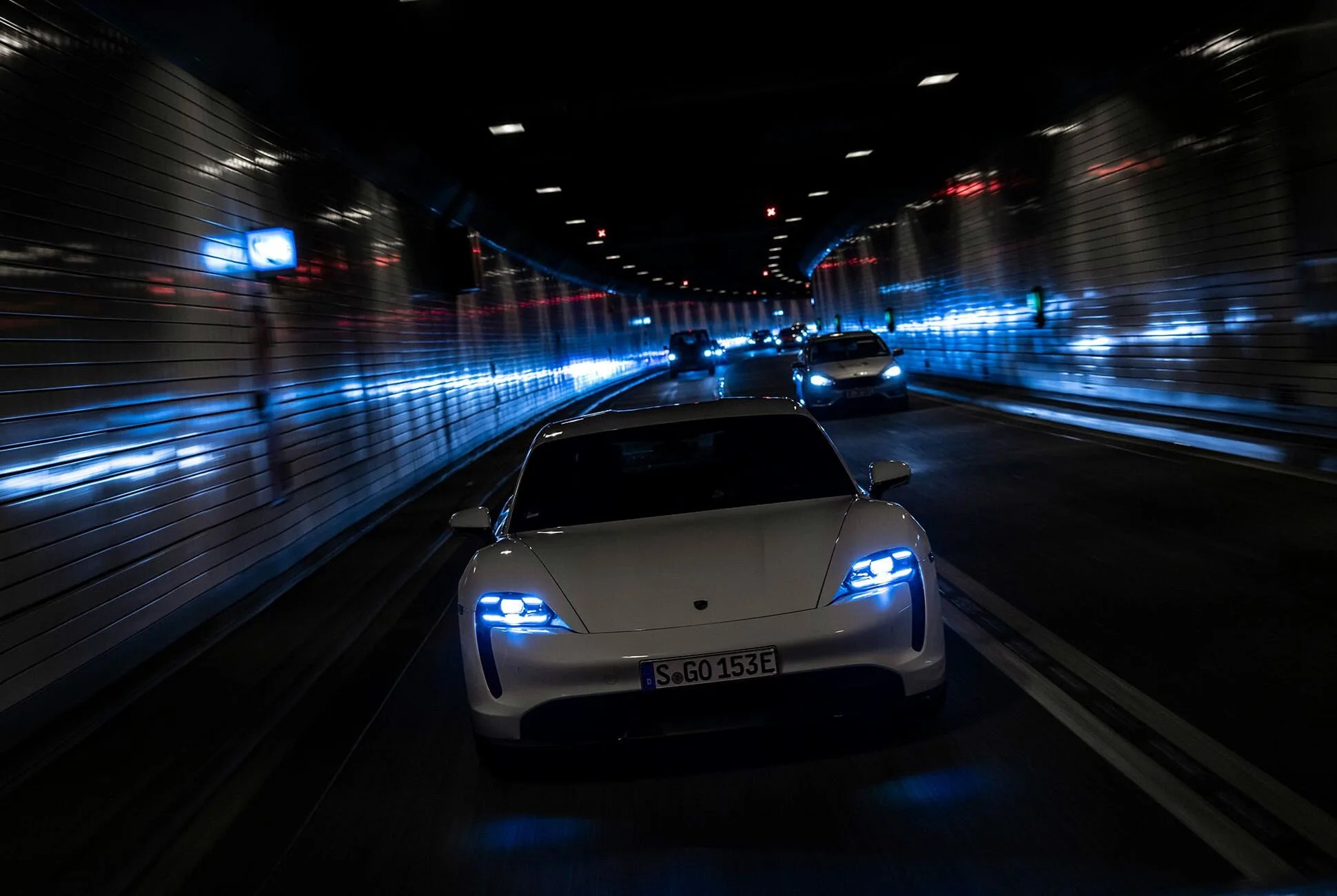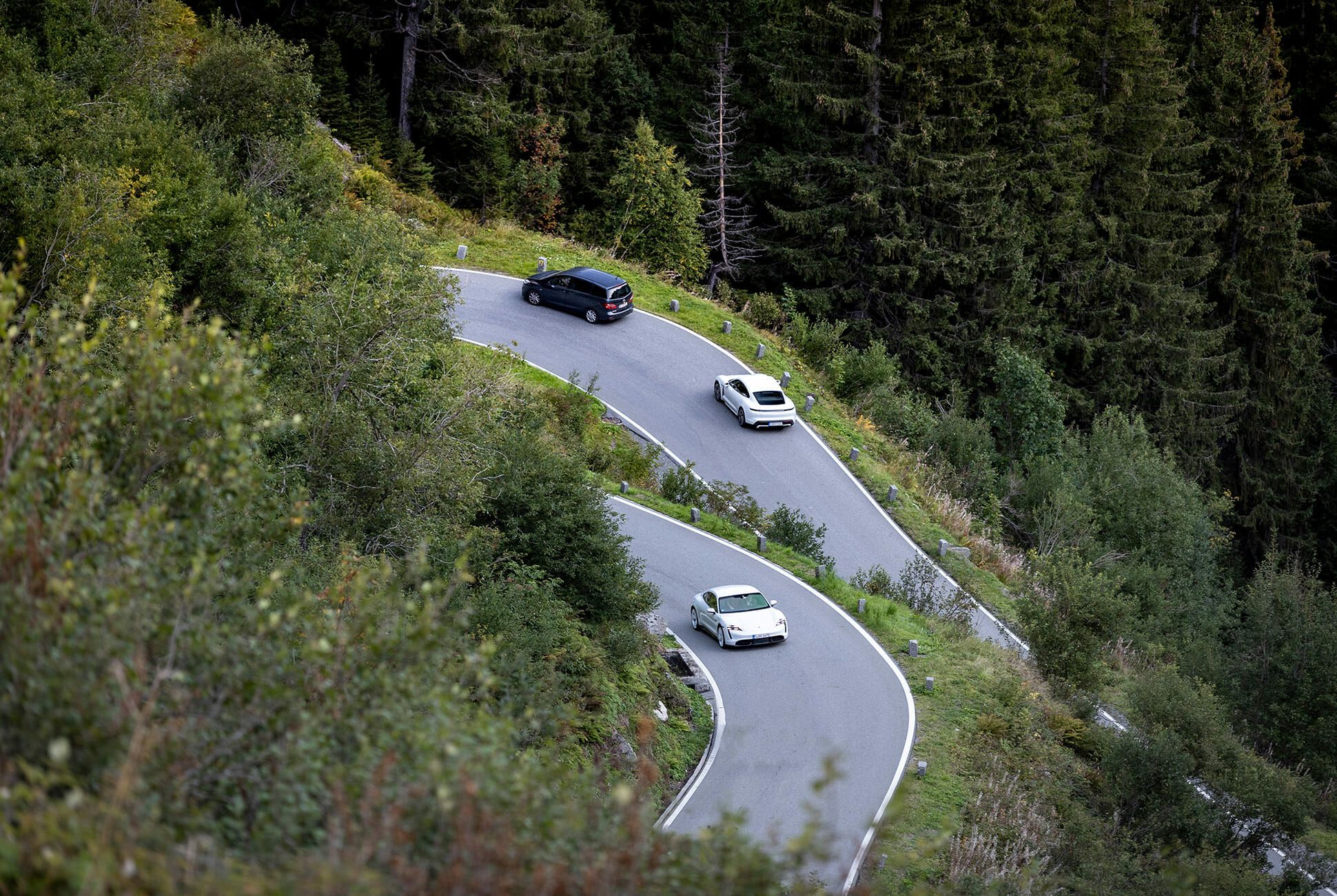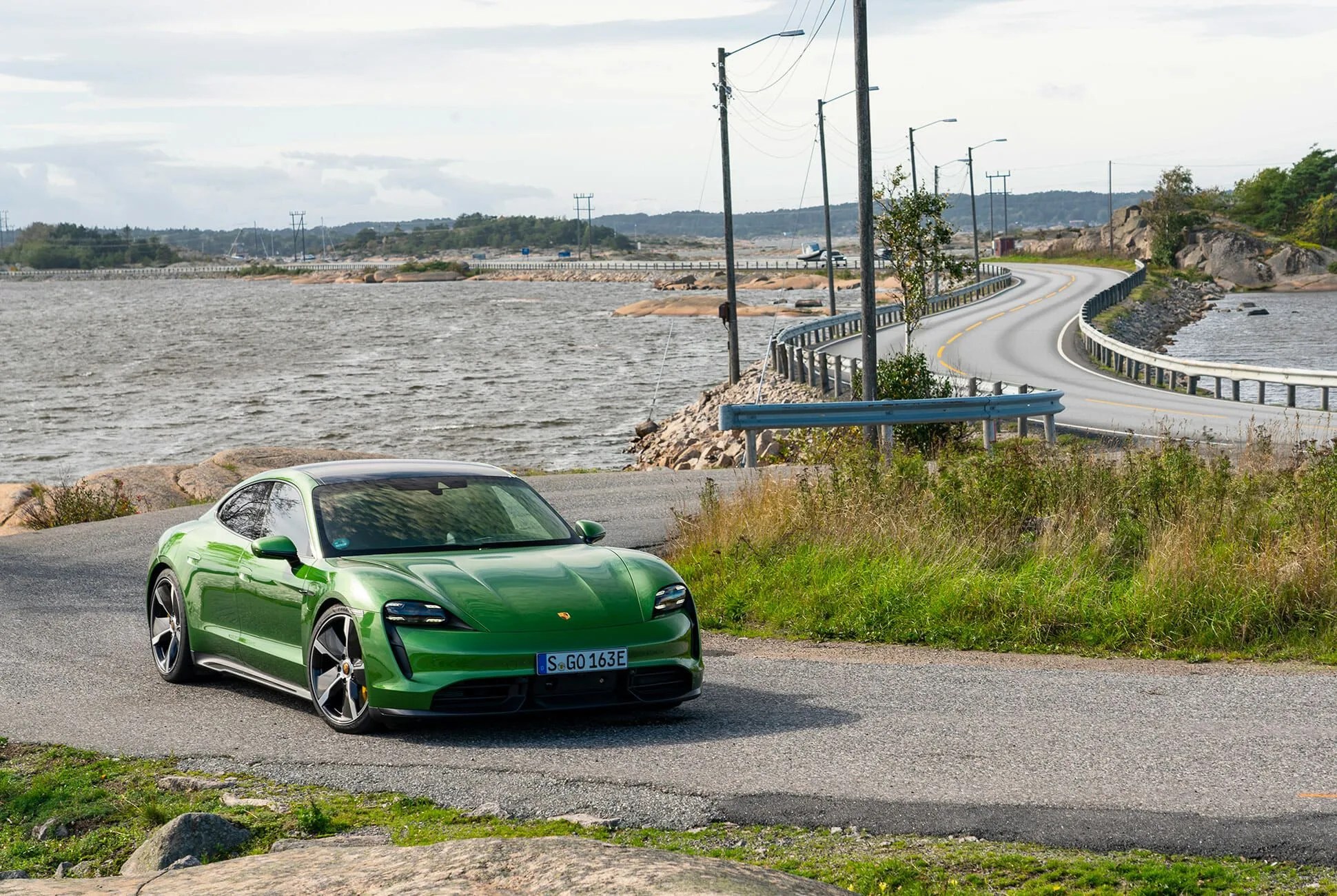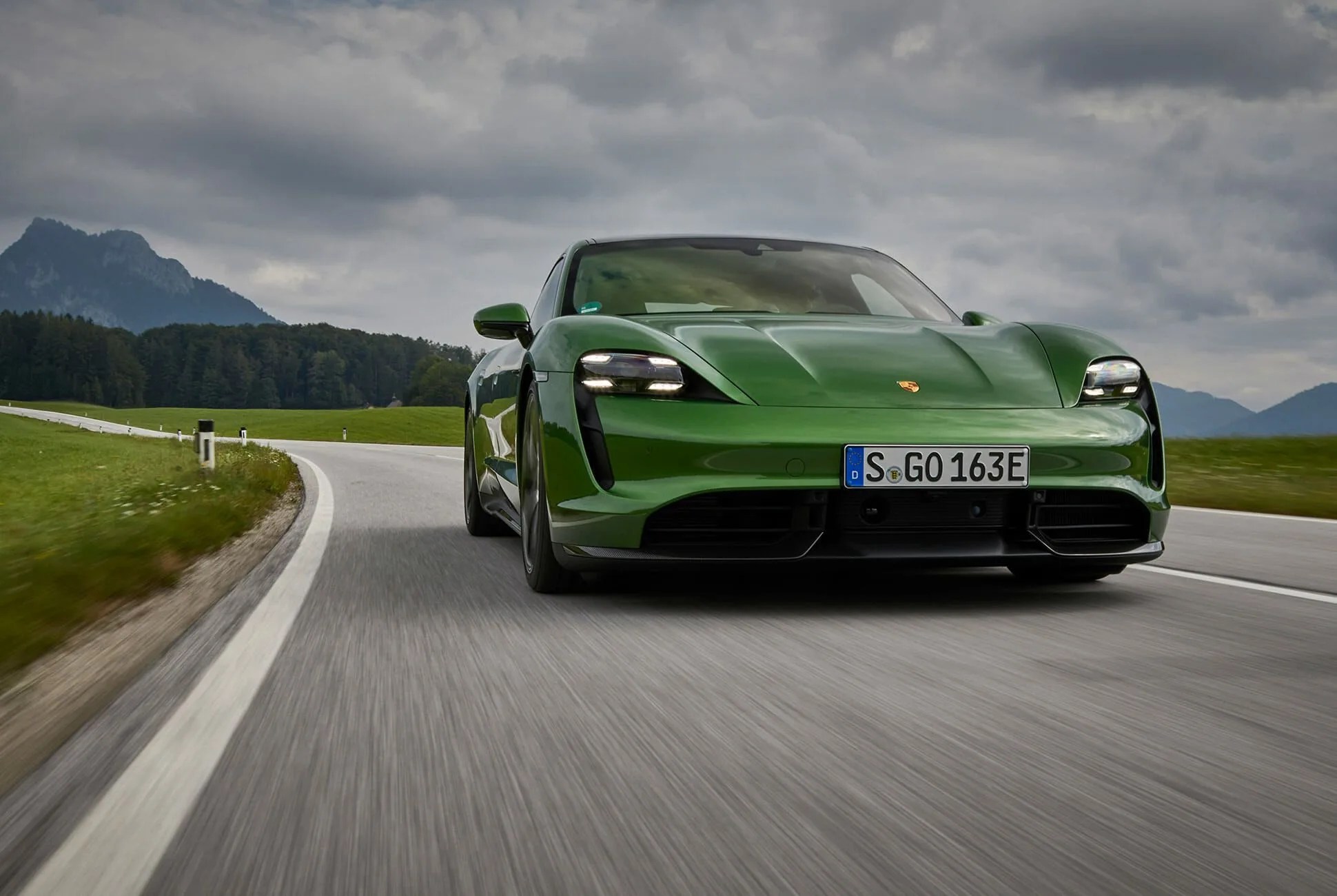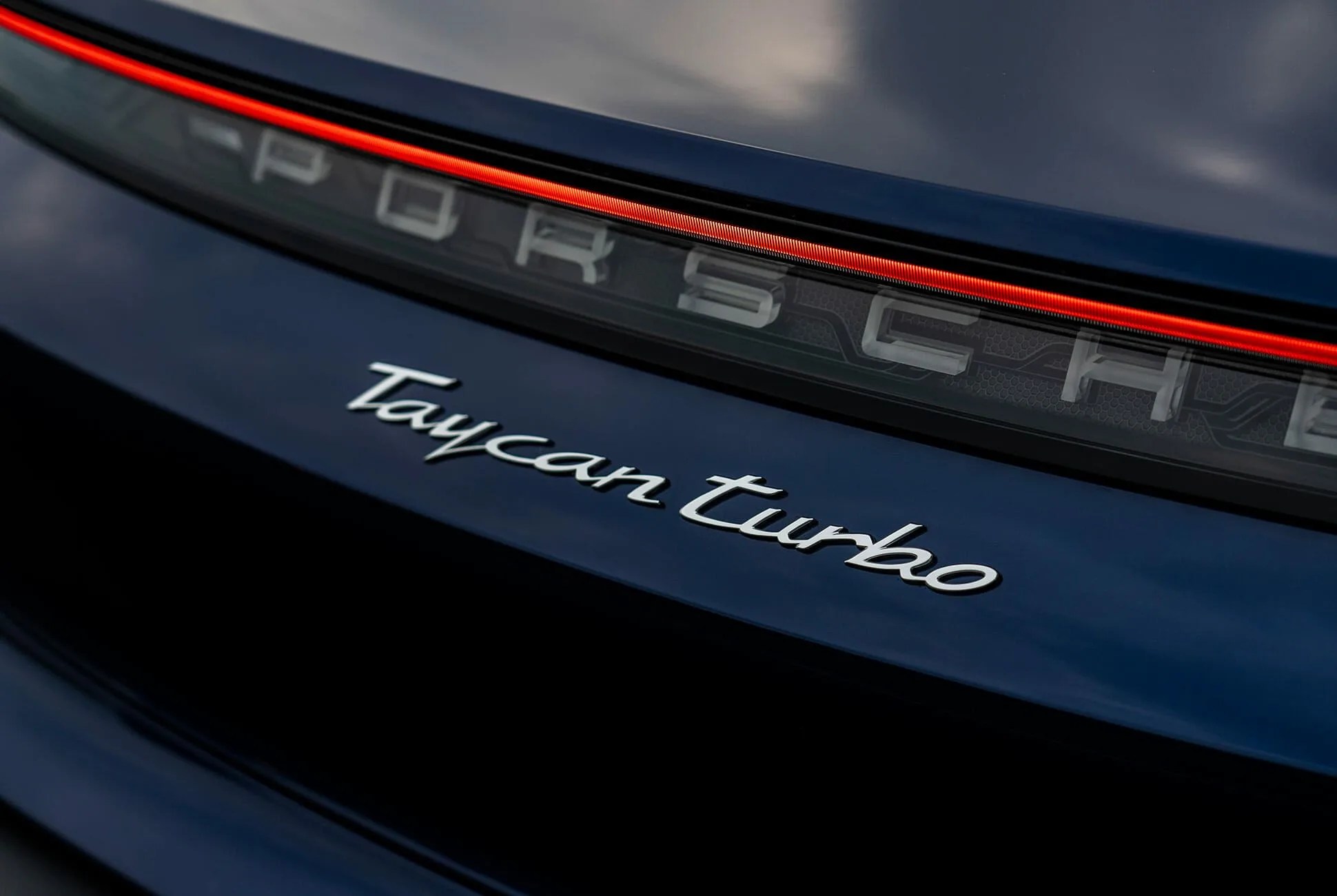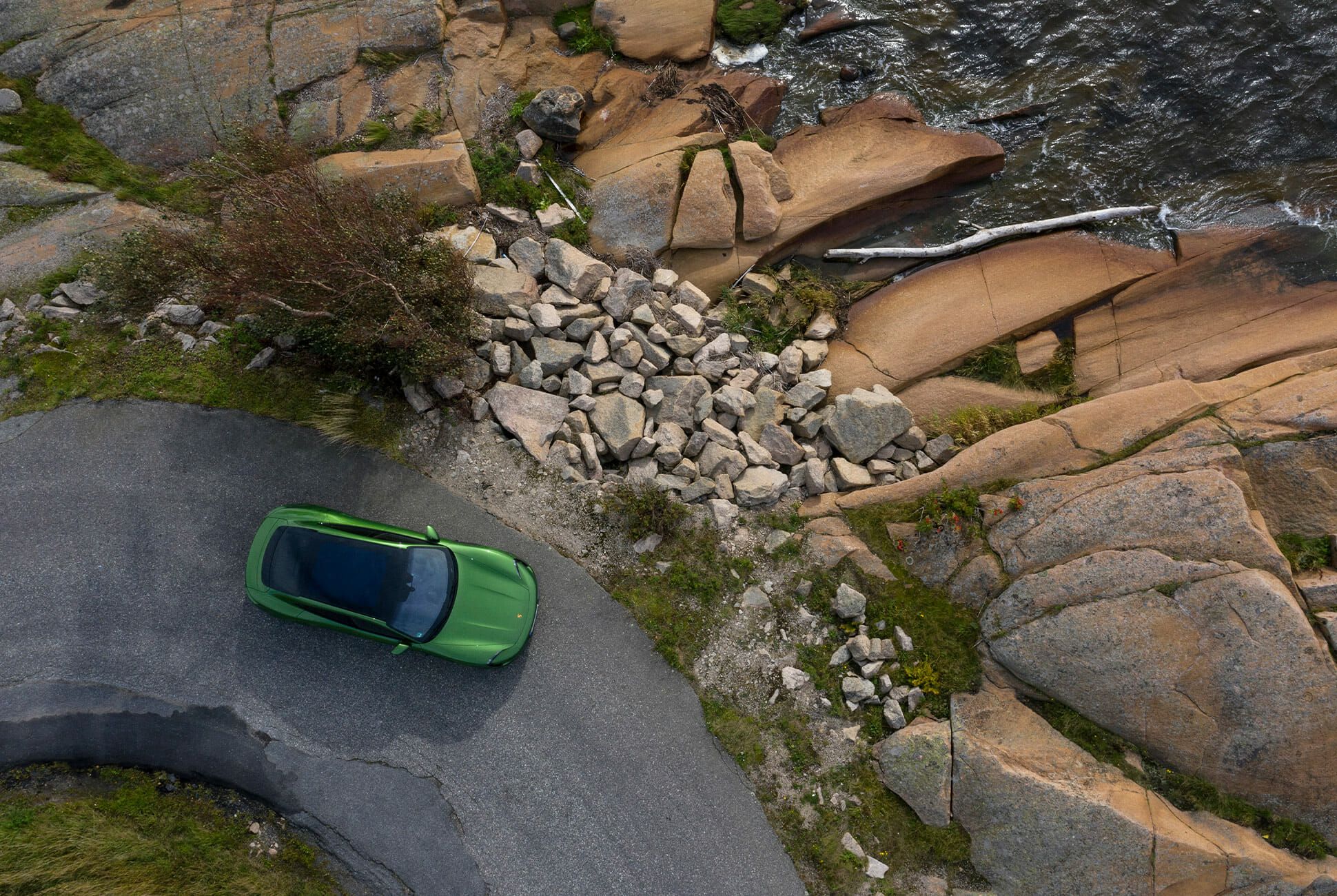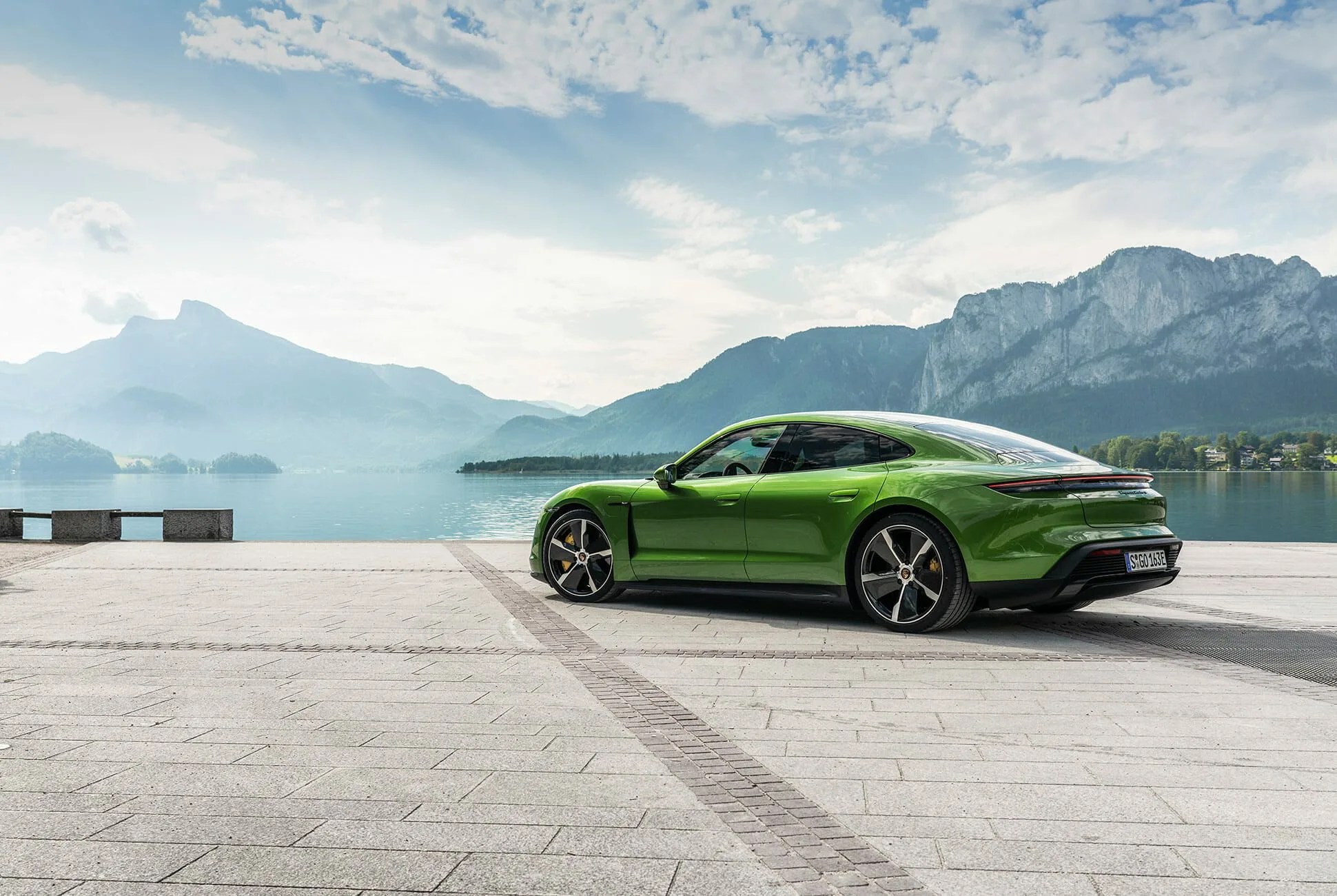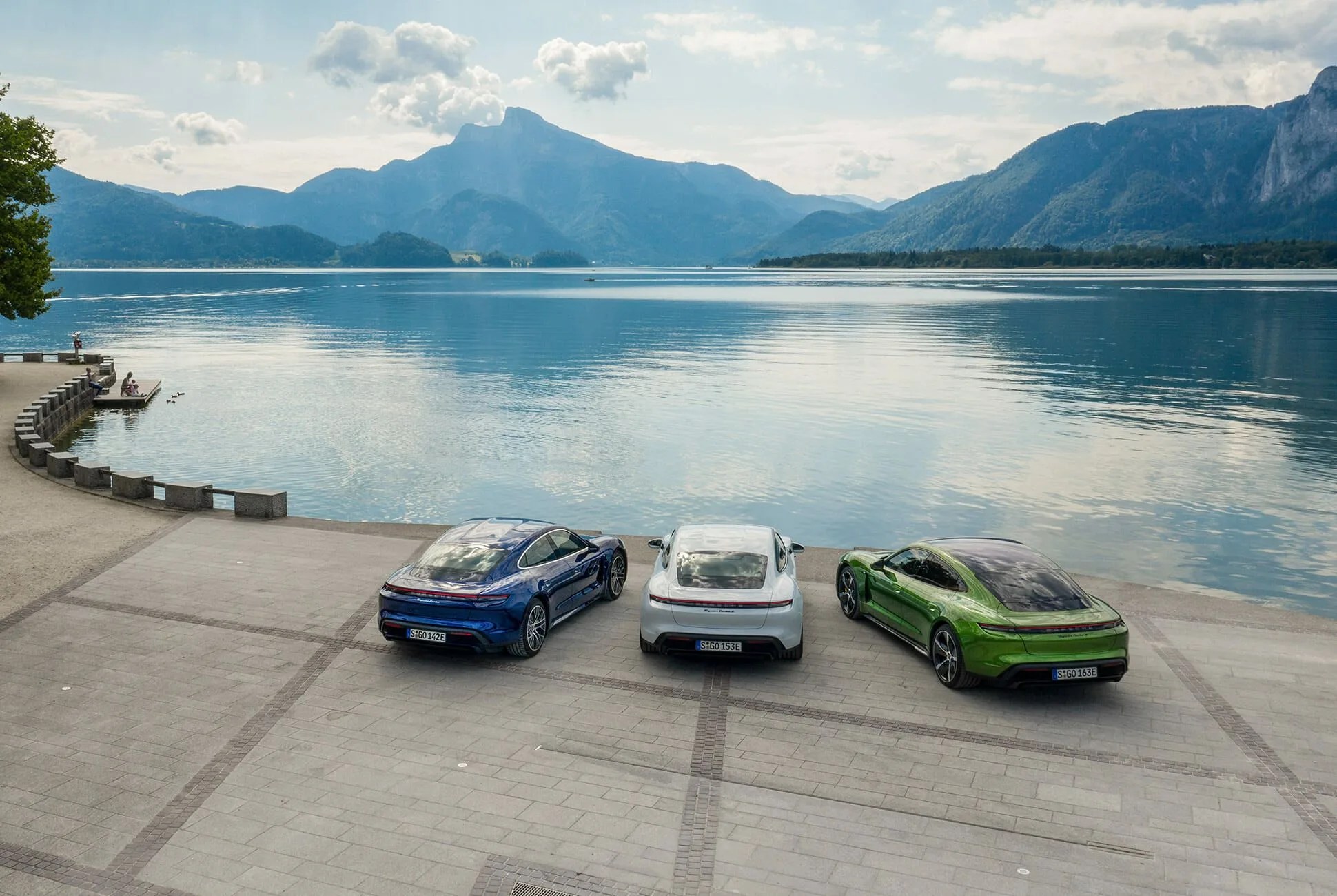8 photos
The 2020 Porsche Taycan Turbo S is vicious. It’s easy to shoehorn bombastic or hyperbolic adjectives into car reviews, especially with today’s crop of carbon-fiber-and-metal bolts of lightning. And yet, after sitting on an arrow-straight country road in Denmark on the outskirts of Copenhagen and releasing the brake pedal while mashing the accelerator to activate the launch control, the resulting take-off can be described by no other term but: Vicious.
The Taycan Turbo S’s full shot of 750 horsepower and 775 pound-ft of torque is enough to make the 2.5-ton sedan shudder through a scooch of wheel spin for a hair of a second. Once the wheels bite, you’re propelled forth with enough g-force to make you dizzy as your senses try to recalibrate. You become acutely aware of internal organs smashed backward, a disconcerting sensation that evokes unease. Your heartbeat spikes (confirmed by this author’s Apple Watch) and you realize that you haven’t breathed once in the 2.6 seconds — Porsche’s own measure, and a conservative one at best — that it’s taken to blow by 60 miles an hour.
When it’s over — when you’ve railed the stoppers in hope of abating the queasiness flooding your body — several beats go by while your central nervous system restores equilibrium. Calm returns and you’re left with one thought reverberating through your head: “Let’s do it again.”
The Good: Porsche engineers cared little about making an electric vehicle that would set records for efficiency while allaying range anxiety. If you want to save the world, go buy a Chevy Bolt. If you want pure, exhilarating performance, buy a Taycan.
What Porsche has created is a driver-focused road rocket that happens to use an electric drivetrain. And it’s a very solid drivetrain: A permanently excited synchronous motor perches atop each axle, with a slightly larger motor in the rear. A two-speed transmission is fitted to the latter to help provide rapid acceleration, with the palpable shift happening around 50 miles an hour. Power comes from an 800-volt system anchored by a 93.4 kWh battery pack that’s good for a reported 270 miles in the European driving cycle. (When the EPA weighs in, expect that to drop down to 220 miles or less for American users.)
